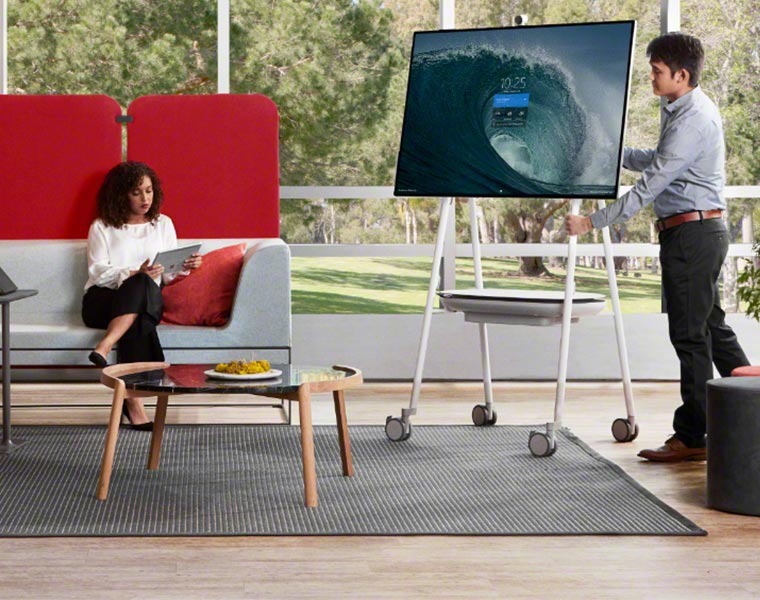As part of the wider picture, empowering a workplace includes things like flexible working hours, pet-friendly office policies and loosening expectations about staff location and permitting more remote working. These are all things which place some power and autonomy back into the employee’s hands.
These are cultural and practical factors which are undoubtedly linked to the look, feel and functionality of a workspace. However, in this blog post, we’re going to be exploring the actual physical environment and tangible design elements which come into play when fostering an empowered workplace.

First though:
What is an empowered workspace?
Traditional offices of the past were usually one uniform environment in which staff were expected to just make the most of what was available to them. These days, there is a much wider acknowledgement of how diverse people are and how what might work for one employee might not work for another.
An empowered workspace is all about creating a softer, more adaptable environment with changeable elements which can offer different experiences for different people. It’s about empowering employees by providing them with the facilities, resource, surroundings and culture they need to succeed.

How to give staff more Choice & Control?
In shared offices and coworkspaces where staff are becoming more nomadic and less tethered to dedicated workstations, complete personalisation isn’t always possible. That said, our experts have identified personalisation as a trend in the world of office interior design so it’s crucial that employees are offered a sufficient level of professional autonomy.
Here’s how:
- A range of different work settings which staff can move between according to requirement. It may be a collaborative space to brainstorm with colleagues, a privacy booth for individual focus or a social area where they can relax and rejuvenate.
- Adaptable space division solutions which can be easily moved around the space to create micro neighbourhoods when necessary.
- Modular furniture which can be reconfigured to cater for the needs and requirements of those using it.
- An agile working culture which promotes and encourages the freedom of activity-based work.
This is more than just a trend though. Offering staff Choice & Control and allowing them empowerment is instrumental in nurturing a happy, healthy and successful workforce.
By this we’re referring to:
The benefits of an empowered workspace
Psychologists from the University of Exeter, Alex Haslam and Craig Knight conducted an experiment to test the impact an empowered workspace had on mood and productivity. As part of their study, they created four different test environments in which participants carried out simple administrative tasks:
- A ‘lean office’ with minimal décor and nothing but a desk, chair, paper and pen.
- An ‘enriched office’ which mimicked the lean office but with décor such as wall prints and plants.
- An ‘empowered office’ in which the worker was provided with décor pieces that they could arrange themselves to completely personalise the space.
- A ‘disempowered office’ in which the worker was given the option to create an empowered workspace but their space was then rearranged by ‘somebody’ in a position of ‘power’ i.e. a manager or business owner.

Empowered workspaces boost productivity by 30%
The results of the experiment revealed that those working in the empowered office, where they were able to control their own surroundings, were 30% more productive. Those participants in the disempowered workspace reported feelings of resentment towards the person who rearranged it and even consequential feelings of physical violence.
On a larger scale, these findings are demonstrative of what could be happening in your workplace should you fail to provide staff with an empowered environment. Employees could potentially start to resent senior staff and/or colleagues and develop high stress and frustration levels.
Therefore, an empowered workspace has the following advantages:
- Increased motivation and productivity levels
- Improved job satisfaction
- Better cross communication between teams and departments
- Healthier relationship between senior staff and their workforce
- An improvement in staff wellbeing
- Competitive advantage and improved attraction and retention of talent
